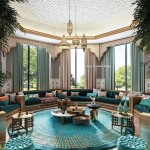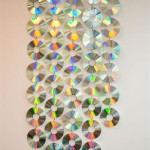What Is Primitive Decorating Style?
Primitive decorating, often referred to as Early American or Colonial Primitive, evokes a sense of simplicity, history, and handcrafted charm. It draws inspiration from the practical and utilitarian aesthetics of 18th and 19th-century homes in rural America, focusing on natural materials, muted colors, and a sense of unpretentious comfort.
This style is characterized by an absence of ornamentation and embellishment, prioritizing function over elaborate decoration. Furniture pieces are typically simple and sturdy, often handcrafted from wood like pine, maple, or cherry. The focus is on clean lines and practical forms, reflecting the resourcefulness and self-sufficiency of early American settlers.
Textiles play a significant role in primitive decorating. Natural fibers such as linen, wool, and cotton are prevalent. Handwoven rugs, quilts, and homespun fabrics add warmth and texture to the space. These textiles often feature simple geometric patterns, checks, stripes, or muted floral designs, reflecting the limited resources and practical nature of the era.
Color palettes in primitive decorating are typically subdued and earthy. Neutral tones like beige, cream, brown, and gray dominate, creating a calming and harmonious atmosphere. Accent colors are often drawn from nature, including muted shades of green, blue, red, and mustard yellow. These colors are often incorporated through textiles, painted furniture, or decorative accents.
Lighting in a primitive-style home is often soft and ambient. Candles, oil lamps, and lanterns are common elements, adding to the historical ambiance. Reproductions of early American lighting fixtures, such as wrought iron chandeliers or tin sconces, can also be incorporated. Natural light is maximized, contributing to the overall sense of simplicity and connection to the outdoors.
Accessories and decorative elements are carefully chosen to enhance the primitive aesthetic. Antique or reproduction tools, wooden bowls, baskets, and pottery are frequently used. Dried herbs, flowers, and pinecones bring a touch of nature indoors. These items are often displayed sparingly, avoiding clutter and maintaining the sense of unadorned simplicity.
Wall décor in primitive homes is often minimal. Simple framed prints, antique maps, or samplers can add visual interest. Exposed beams and original plaster walls contribute to the historical authenticity of the space. Wallpaper is generally avoided, opting instead for painted walls in muted tones.
Flooring in primitive decorating is typically wood, often wide plank pine or other readily available local woods. Rugs, usually braided or hooked, are used to define areas and add warmth. These rugs often feature simple geometric patterns or muted colors that complement the overall aesthetic.
The overall impression of a primitive-decorated space is one of warmth, comfort, and understated elegance. The emphasis on natural materials, simple forms, and handcrafted items creates a sense of connection to the past and a celebration of traditional craftsmanship. It is a style that embraces imperfection and celebrates the beauty of simplicity.
Furniture often features distressed finishes, showcasing the natural wear and tear of time. This weathered look adds to the authentic feel of the space and contributes to the overall sense of history. Paint finishes are often milk paint or other historically accurate techniques, further enhancing the primitive aesthetic.
Architectural details in primitive homes are often simple and functional. Fireplaces are central focal points, often constructed of stone or brick. Exposed beams and original woodwork are valued and preserved. Windows are typically small and multi-paned, reflecting the architectural styles of the era.
The primitive decorating style is not merely a replication of historical interiors but an interpretation that captures the essence of early American life. It is a style that values functionality, simplicity, and a connection to nature. It is a celebration of craftsmanship and a rejection of ornamentation and excess.
Modern interpretations of primitive decorating often incorporate elements of other related styles, such as farmhouse or rustic décor. These styles share a similar emphasis on natural materials and simple forms, creating a cohesive and harmonious blend. However, the core principles of primitive decorating – simplicity, functionality, and a connection to the past – remain central.
Creating a primitive-style home involves careful consideration of every element, from the furniture and textiles to the accessories and lighting. It is a process of curation and selection, focusing on pieces that embody the spirit of early American life and reflect the values of simplicity and authenticity.
The appeal of primitive decorating lies in its ability to create a space that feels both timeless and inviting. It is a style that resonates with those who appreciate the beauty of handcrafted items, the warmth of natural materials, and the simplicity of a life lived close to nature.

What Is Primitive Home Decor And How To Use Style At

My Primitive Decor Decorating Country Living Room Prim

Primitives And Fall A Match Made In Heaven Decorating With Just Vintage Home Primitive Living Room Country House

Primitive Decor Ideas Country Decorating C Home House

Primitive Decor Ideas On Stylish Home Decorating Decoholic Country

What Is Primitive Decor And Style Explained

A Primer On Primitive Decor And How To Use It In Your Home Antique Farmhouse

Primitive Style Country Farmhouse Decorating Ideas Americana Folk Art H Decor Rustic Homes

Eye For Design Decorating In The Primitive Colonial Style

A Modern Double Wide Goes Primitive With Country Decor Mobile Home Living







